The world of engineering design is constantly evolving, driven by advancements in technology and a push to maximize efficiency, sustainability, and innovation. The emerging technologies are transforming the way engineers conceptualize, design, and collaborate on projects. In this blog, we’ll review the engineering tools that are gaining attention in engineering design, including AR, generative design, and more.
1. Augmented Reality (AR) and Virtual Reality (VR)
AR and VR are revolutionizing the way engineers visualize and interact with their designs. These technologies provide immersive environments for engineers to interact with 3D models and simulate real-world scenarios to evaluate the functionality of their design. Some key benefits of AR and VR for engineering design include:
- Collaborative Design: In a VR space, engineers can collaborate in real-time across different locations. They can move around and interact simultaneously with a 3D model, allowing for better visualization and communications. This is especially beneficial in a world where remote work is increasingly common.
- Design Reviews: AR and VR allow those unfamiliar with engineering software/drawings, such as stakeholders, to visualize a project in 3D space. In the immersive environment, they can see and interact with a virtual model. This can be especially useful during design reviews where it leads to better-informed decisions and quicker approvals.
- Training and Simulation: Engineers can use VR to simulate and inspect a project during complex tasks and scenarios, improving training and reducing the risk of errors in real-world applications.
To read more about AR and VR visit: https://www.ien.eu/article/how-augmented-reality-is-changing-engineering/
2. Artificial Intelligence (AI)
AI is growing an alternate tool in engineering design. Utilizing machine learning, AI can complete tedious tasks at a fraction of the time it would take a human. It streamlines the design process, providing insights in mere minutes, while enhancing automation and optimizing designs. AI is trending towards engineering design in ways that include:
- Generative Design: AI-powered generative design algorithms can explore numerous design possibilities, considering various constraints to create innovative designs. The user outlines the design parameters and generative design uses them to provide many possible designs that meet these requirements. After exploring the various solutions offered by generative design, the engineer can determine which option is most feasible for their application. Users can also use generative design to reconceptualize designs and provide fresh applications for maximizing performance.
- Simulation and Analysis: AI-driven simulations can help model and analyze complex systems, making it easier to optimize designs and identify potential issues.
3. Digital Twins
Digital twins are virtual models of physical objects, beings, or processes used to replicate real world circumstances to better inform engineering decisions. They are connected to data to constantly update and reflect the latest change to their physical counterpart. By combining data and digital twins, an entire virtual environment can be made to simulate situations and optimize design. Digital twins are used by many major companies. For example, race cars are evaluated using digital twins of new components. Some key benefits to digital twins are:
- Sustainability: Engineers can test for flaws in a design digitally before expending any physical materials. This saves resources and cost.
- Simulation: Engineers can use digital twins to simulate complex tasks and scenarios to predict outcomes. Therefore, reducing the risk of errors in real-world applications and increasing confidence in a design.
- Optimize performance: Engineers can use digital twin simulations to determine the most efficient way to design a system and optimize production, functionality, or performance.
- Design communication: Digital twins enable engineers to provide stakeholders with a thorough understanding of the project through simulations utilizing 3D visualization.
To read more about Digital Twins visit: https://www.mckinsey.com/featured-insights/mckinsey-explainers/what-is-digital-twin-technology
4. 3D Laser Scanning
3D laser scanning is another trend which has a vast range of applications with substantial benefits to engineers. Lasers save time, money, and resources by capturing complex geometries in the blink of an eye. This leads to faster and more accurate 3D models which are used to assess project needs. Some applications of 3D laser scanning include:
- Site Reviews: 3D laser scanning can determine the site conditions and topography prior to construction. When construction is ongoing or completed, it can be used to quickly review and assess the accuracy of the construction work when compared to the design. Instead of engineers spending
hours on site reviewing the installation, 3D scanning technology produces a digital model of the site with accuracy within a millimeter. - Renovations: Planning to restore, renovate, or add to existing buildings can be difficult for engineers because the existing drawings are often out-of-date and inaccurate. 3D laser scanning is the perfect way to easily create an up-to-date model of a building. It accurately scans the existing space, capturing its conditions and measurements. This can be adapted to CAD to create fully dimensioned drawings ready for the renovation updates to be applied. It also saves on construction materials because for any renovation occurring the laser scan can provide any dimensions or areas so an acceptable amount of material can be ordered. 3D laser scanning provides detailed documentation of existing buildings which can be used for restoration, renovation, and addition purposes.
To read more about 3D Laser Scanning visit: https://www.cemcorp.com/3d-laser-scanning-technology-project-applications/
5. Drone Technology
Drone technology, primarily used for aerial imagery, has become increasingly popular in the world of engineering. This is due to their convenience, low-cost, user-friendly design, and ability to accurately capture data. Controlled by a user on the ground, drones can fly or fit through spaces. They can also be fitted with different attachments, like cameras, or even deliver small packages. There are various applications for this technology in the engineering design field including:
- 3D Laser Scans: Drones fitted with 3D scanners can captures vital site information from angles that are inaccessible.
- Site Mapping: Drone images can provide a topographic and asset map of the site to provide engineers with vital information for their designs.
- Roof inspection: Drones can be used for roof inspections and safety monitoring, eliminating the risk of working at heights which dramatically improves safety.
To read more about Drone Technology visit: https://www.bgeinc.com/leading/three-ways-drone-technology-impacts-engineering/
6. Additive Manufacturing
Additive manufacturing, also known as 3D Printing, continues to gain popularity in engineering design. This technology offers numerous benefits, including reduced waste, faster prototyping, and the ability to create complex geometries. Additive, unlike standard, manufacturing is built layer-by-layer creating flexibility for the product being produced. This technology can create complex parts, not limited by conventional manufacturing processes. This often eliminating the need for assembly of multiple parts. In general, 3D printing provides the engineer with complete control over their design making it a gamechanger in the world of engineering design and manufacturing.
To read more about 3D Printing visit: https://hbr.org/2015/05/the-3-d-printing-revolution
Engineering design is being transformed by advancements in technology. They allow engineers to conduct surveys faster, capturing detailed information using drones and 3D laser scanners. AI can process the information efficiently by automating tedious and repetitive tasks. Once the information is sorted, Digital Twins can be used to simulate its behaviour. Throughout this process, digital models can be viewed using AR and VR technology. Finally, a custom prototype can be created using additive manufacturing, immediately ready for testing. As the industry continues to evolve, engineers can use these tools to design sustainable, efficient, and innovative solutions for the challenges of tomorrow.

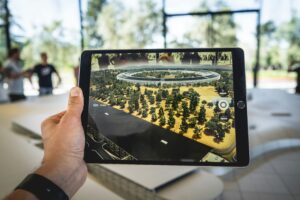
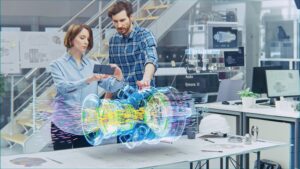
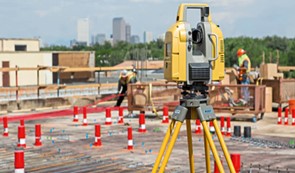
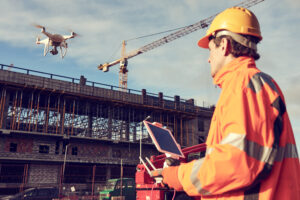
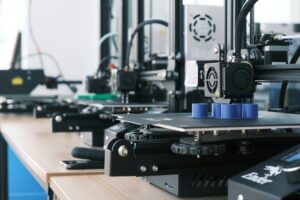


Leave a Reply